Understanding epoxy cure time is crucial before starting any resin project. Most epoxies require 72 hours (3 days) for a complete cure, though you'll notice it becoming touch-dry after approximately 24 hours.
Don't be deceived by this initial hardness—your project isn't ready for use until fully cured! Temperature significantly impacts curing; working below 60°F dramatically extends cure times, while controlled heat can accelerate the process.
The type of epoxy and environmental conditions also play vital roles in determining exactly how long your project needs.
Read on to master the science of epoxy curing and avoid common mistakes!
What Is Epoxy Cure Time?

Epoxy cure time is how long it takes for epoxy to harden and reach its full strength. Epoxy goes through different stages as it cures. When you first mix the resin and hardener, a chemical reaction starts.
During the first phase (gel time), epoxy changes from liquid to a soft gel. You can't work with it anymore, but it's still not hard.
The second phase is when it becomes hard to the touch. This usually happens within 24 hours. Many people think epoxy is fully cured at this point, but that's not true!
The final phase is full cure. This is when the epoxy reaches its maximum strength and hardness. For most table top epoxies, this takes about 72 hours in ideal conditions. Some types might need a week or even longer!
Why Cure Time Matters for Your Project
Rushing the cure time can ruin your hard work. If you use epoxy before it's fully cured, it might not be strong enough for your project. This could lead to cracks, dents, or other damage.
Temperature really affects how fast epoxy cures. Warmer rooms speed up curing, while cooler spaces slow it down. Most epoxies need at least 60°F to cure properly.
Different projects need different cure times. For example:
- Light items can be placed on a table after 24 hours
- Heavier objects should wait the full 72 hours
- For industrial applications, waiting a full week is best
The type of epoxy matters too! Some fast-curing epoxies set in an hour at high temperatures, while others need 8+ hours at room temperature. Always check the product instructions for your specific epoxy adhesive.
Factors That Affect Epoxy Cure Time
When working with epoxy, several key elements can speed up or slow down how quickly it hardens. Understanding these factors helps you get better results with your projects.
Temperature and Environmental Impact
Temperature plays a huge role in how fast your epoxy cures. Warmer temperatures make epoxy cure faster because the heat speeds up the chemical reaction between the resin and hardener. Most epoxies work best at around 70-75°F (21-24°C).
If your workspace is too cold (below 60°F/15°C), your epoxy might take days to fully harden! This can make your project sticky or soft. In very cold conditions, some epoxies might not cure properly at all.
Humidity also matters. Too much moisture in the air can make epoxy cloudy or prevent it from hardening right. On really humid days, you might want to use a dehumidifier in your workspace.
The size of your pour affects curing too. Thicker pours generate more heat and can cure faster in the middle than at the edges.
Epoxy Type and Formulation
Different epoxies are made for different cure times. Fast-setting formulas might harden in just 5 minutes, while slow-curing types could take 24 hours or more.
The mixing ratio is super important! If you don't follow the exact measurements the maker suggests, your epoxy might never fully cure. Always measure carefully using the right tools.
Some brands offer "fast" and "slow" hardeners that you can pick based on your project needs. Fast hardeners are great for small repairs, while slow ones work better for big pours or when you need more working time.
The age of your epoxy matters too. Older products might not cure properly, even if they haven't expired. Store your epoxy in a cool, dry place to keep it fresh longer.
Typical Epoxy Cure Times by Application

Epoxy products cure at different rates depending on what you're making and which product you choose. Temperature and humidity in your workspace also affect how quickly your project will be ready to use.
Standard Surface Applications
When you're coating a table top or creating a thin layer of epoxy, you can expect different cure times.
Most table top epoxies become touch-dry in about 24 hours. But don't rush to use your new surface!
The epoxy needs about 72 hours (3 days) to reach a full cure where it's hard enough for normal use. During this time, keep dust away from your project.
For quick repairs or small crafts, 5-minute epoxy is super handy! As the name suggests, it sets in just 5 minutes, making it perfect for emergency fixes. Remember that fast-curing options usually come in smaller amounts and might not work for large projects.
Room temperature matters a lot! If your workshop is colder than 70°F, your epoxy will take longer to cure.
Deep Pour and Thick Layer Applications
Thicker epoxy pours need special consideration and patience. Deep pour epoxies take longer to cure than surface applications because of how the chemical reaction works.
For river tables or thick decorative pours (over 1/2 inch), expect:
- Initial set: 24-48 hours
- Partial cure: 3-5 days
- Complete cure: 7+ days
Most deep pour epoxies are designed to cure slowly on purpose. This prevents overheating and bubbling that can happen when too much epoxy cures at once. Some brands let you pour up to 2 inches at a time.
Don't sand or polish until your deep pour is fully cured! Rushing this step can ruin your project. If you're unsure, wait an extra day - patience leads to better results with thick pours.
Epoxy Cure Time

Epoxy doesn't dry instantly after mixing. It goes through stages before reaching full strength, which can take much longer than you might expect.
Testing for Complete Cure
You can test if your epoxy has fully cured by pressing your fingernail into an inconspicuous spot. If it leaves a mark, it needs more time.
Another simple test is the tap test - fully cured epoxy makes a clear, hard sound when tapped with a coin or metal object.
Temperature matters a lot! At warm temperatures (70-80°F), most epoxies reach their initial set within hours. But don't be fooled by the surface feeling dry.
You can also check hardness with a durometer if you have access to one.
For DIY projects, patience is your best testing tool - wait the full recommended time even if the epoxy seems hard.
Common Indicators of Properly Cured Epoxy
A properly cured epoxy has several tell-tale signs.
It should be completely clear without any cloudiness if using a clear formula. The surface will feel hard and non-tacky to the touch.
Your epoxy should have reached its advertised hardness. Table-top epoxies usually feel rock-solid, while flexible epoxies maintain their intended give.
Despite package claims of "5-minute" or "30-minute" epoxy, these times refer to initial set time, not full cure! Most epoxies need at least 24 hours to reach functional strength, and 72 hours or more for full strength.
The smell changes too! Fresh epoxy has a strong chemical odor that fades as curing completes.
For consistent, perfect curing results every time, invest in a resin curing machine.
How to Speed Up or Slow Down Epoxy Cure Time
You can control how fast your epoxy cures based on your project needs. Sometimes you want it to harden quickly, while other times you need more time to work with it.
Accelerating the Curing Process
Heat is your best friend when you want epoxy to cure faster.
Raising the temperature by just 10°C (18°F) can make your epoxy cure about 50% faster! For most epoxies, curing at 120°F (49°C) for 2 hours or 140°F (60°C) for 1 hour will help reach full strength quickly.
You can use these heating methods:
-
A heat lamp positioned safely above your project
-
A warm room (keep it between 77°F-86°F)
-
A food dehydrator for small items
-
An oven on very low heat (be extremely careful!)
Pour thinner layers when you want faster curing. Thick pours generate more heat and can actually crack or bubble.
Some brands sell "fast cure" hardeners you can use instead of standard ones. Read the label to find the right mix ratio.
Extending Working Time
Cold temperatures slow down the curing process.
Store your resin and hardener in a cool place before mixing if you need more time to work.
Try these methods for longer working time:
- Work in a cooler room (65-70°F)
- Use a larger, shallow mixing container to dissipate heat
- Mix smaller batches at a time
- Look for "slow" or "extended" hardeners specially made for longer working time
Tip: Pour your mixed epoxy into a flat tray instead of leaving it in the mixing cup. This spreads out the heat and gives you extra minutes to work.
Some brands offer special additives that can extend working time by 30 minutes or more. Just be aware these might slightly change the final properties of your cured epoxy.
Troubleshooting Common Epoxy Curing Problems
Epoxy not curing properly can be frustrating when you're in the middle of a project. Let's look at some common problems you might face and how to fix them.
Tacky or Soft Epoxy After Cure Time
Is your epoxy still sticky even after waiting the full cure time? This happens more often than you think!
First, check if you mixed the resin and hardener in the right amounts. Wrong mixing ratios are a top reason for curing failures.
Temperature matters a lot too. If your workspace is below 65°F, your epoxy might need extra time to cure. Try moving your project to a warmer spot or use a space heater nearby.
Humidity can also mess things up. High moisture in the air can keep epoxy from hardening properly.
For projects that won't cure, you might need to add another layer of properly mixed epoxy on top.
Don't panic if it's taking longer than expected - some epoxies need up to 72 hours to fully harden, especially in cool conditions!
Surface Defects During Curing
Bubbles in your epoxy can ruin the smooth finish you wanted. To get rid of them, use a heat gun or torch (carefully!) to pop bubbles that rise to the surface after pouring.
Are you seeing ripples or waves? This could mean your mixing area is too cold. Try warming your resin and hardener bottles in warm water before mixing.
White spots or cloudiness usually happen when water gets into your mix. Always work in a dry area and keep water-based products far away.
If you notice dimples or "fish eyes," there might be oil or silicone contamination. Clean your surface super well before starting, and avoid using silicone products nearby while working with epoxy.
For uneven curing, make sure your work surface is level and you're applying an even thickness throughout your piece.
Post-Cure Considerations
Even after epoxy feels dry to the touch, the curing process continues behind the scenes. Understanding this post-cure phase is essential for project success.
Safety and Usage After Initial Cure
While your epoxy project may feel solid initially, patience is crucial. Most epoxies continue curing for up to two weeks at room temperature to reach maximum strength. Wait at least 24 hours before light handling and 72+ hours before heavy-duty use or water exposure.
Temperature significantly impacts curing speeds—warmer environments accelerate the process, while cooler conditions slow it down. For faster results, you can gently warm the area with a heat lamp, but avoid overheating. Some epoxies benefit from post-curing at higher temperatures for optimal performance.
Adding More Epoxy to Cured Surfaces
Adding new epoxy to an already cured surface requires proper preparation, as cured epoxy creates a smooth surface that resists adhesion. To ensure a strong bond:
- Lightly sand with 80-120 grit sandpaper
- Clean thoroughly to remove all dust
- Wipe with alcohol to eliminate oils and residue
For the strongest connection, apply your next layer while the first is still tacky—this creates a superior chemical bond rather than just a mechanical one. If your epoxy cured more than 72 hours ago, sanding becomes essential to prevent future peeling.
Conclusion
Understanding epoxy cure time is essential for achieving professional results in your resin projects. By properly managing temperature, humidity, and working conditions, you can ensure optimal curing that leads to durable, beautiful finishes.
Remember that patience is the key—rushing the process often leads to disappointing outcomes. Whether you're creating artwork, jewelry, or functional pieces, respecting the science behind epoxy curing will elevate your craftsmanship and prevent costly mistakes.
Ready to take your resin projects to the next level? Visit Resiners for premium epoxy resins.
Curious about other resin options for your projects? Check out our article Epoxy Resin vs UV Resin: What's the Difference? to explore which type might work best for your specific needs.
Frequently Asked Questions
Can I shorten the waiting period for my epoxy to dry completely?
Yes, you can speed up epoxy curing time with a few simple tricks. Heat is your friend here!
Try using a space heater or heat lamp near your project. Keep it at a safe distance to avoid overheating.
Another option is working in a warmer room. Epoxy cures faster at temperatures between 75-85°F. Just don't go too hot, or you might get bubbles or an uneven cure.
Is it normal for epoxy to feel tacky a day after application?
A slightly tacky surface after 24 hours isn't unusual, especially in cooler or humid environments. Most epoxies need about 72 hours to fully harden.
If your project feels sticky but not wet, you're on the right track. Give it more time before handling it too much. Good air circulation can help the final curing process along.
What should I do if my epoxy is still soft 24 hours later?
First, check the temperature in your workspace. If it's below 70°F, that's likely the culprit. Move your project to a warmer area if possible.
Make sure you mixed the resin and hardener in the correct ratio.
Incorrect mixing is a common cause of soft epoxy. If everything was measured properly, you may just need to wait longer.
As a last resort, you might need to remove the soft layer and pour a new one. But try waiting another day first!
How long should I let my epoxy sit before adding another pour?
For best results, wait until your first layer is firm but still slightly tacky. This usually happens around 4-6 hours after pouring.
This "tacky stage" creates the strongest bond between layers.
If your first layer has cured completely (usually after 24+ hours), lightly sand the surface with fine-grit sandpaper. This helps the new layer stick better.
Then clean off all dust before pouring again.

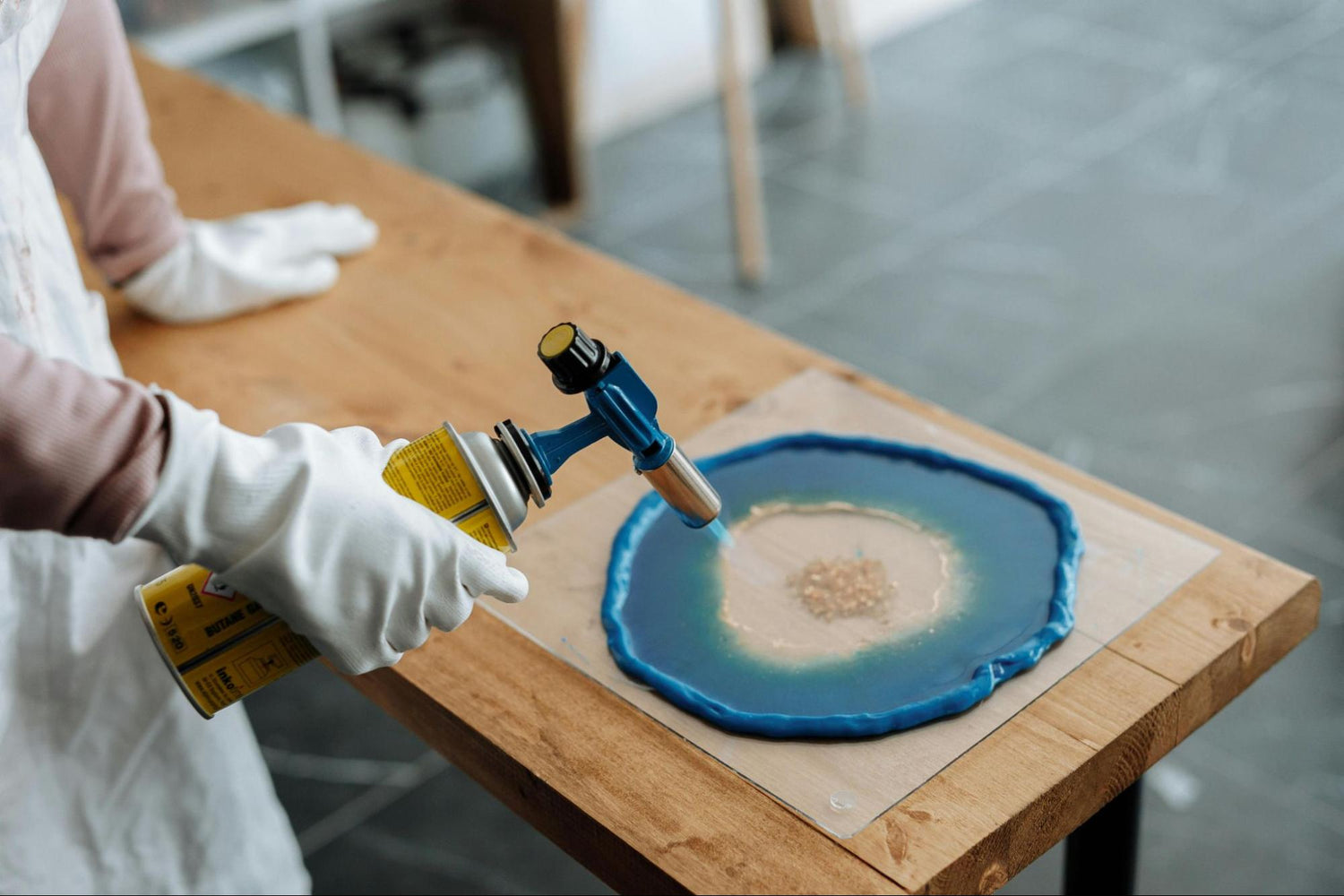
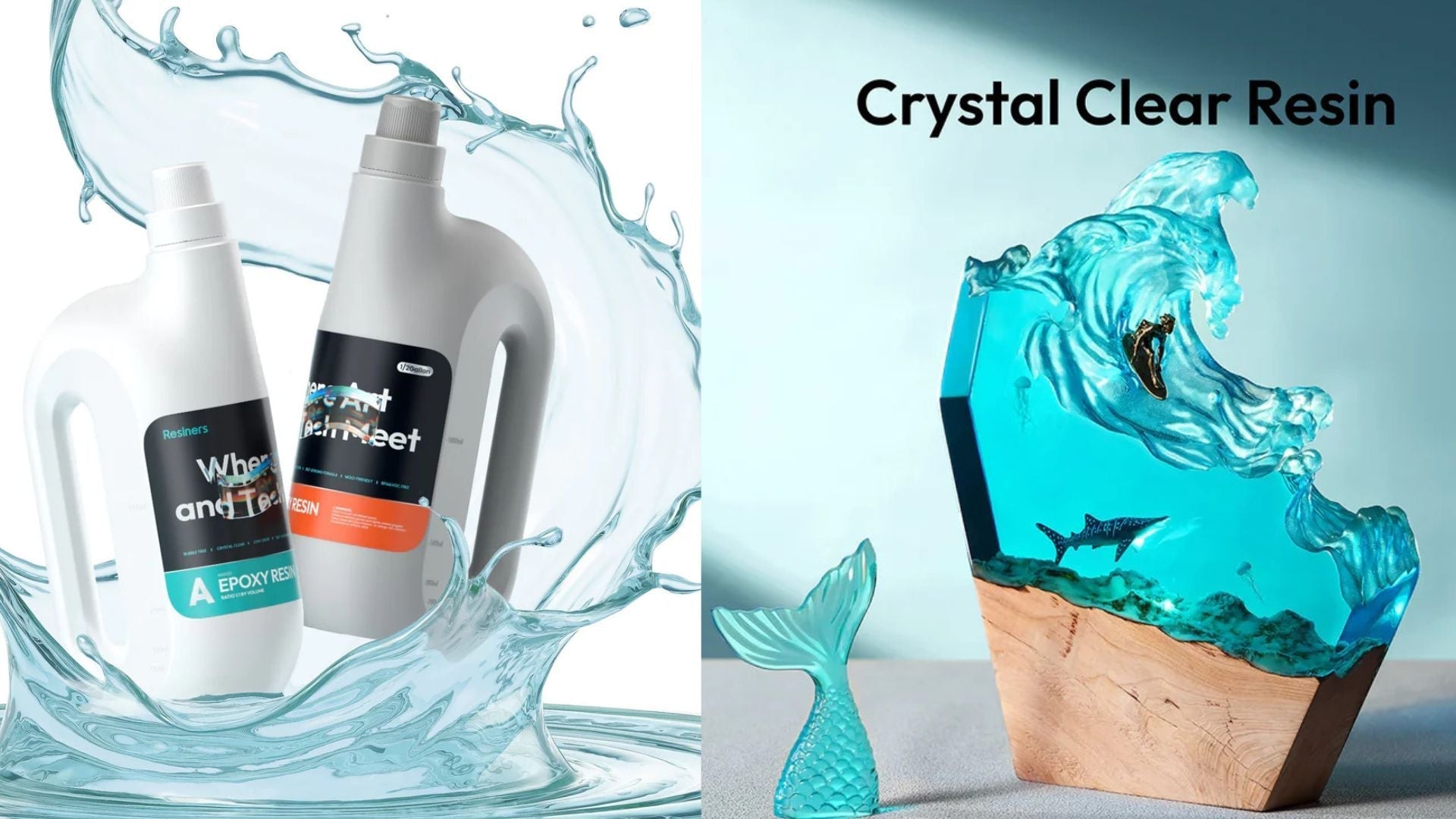
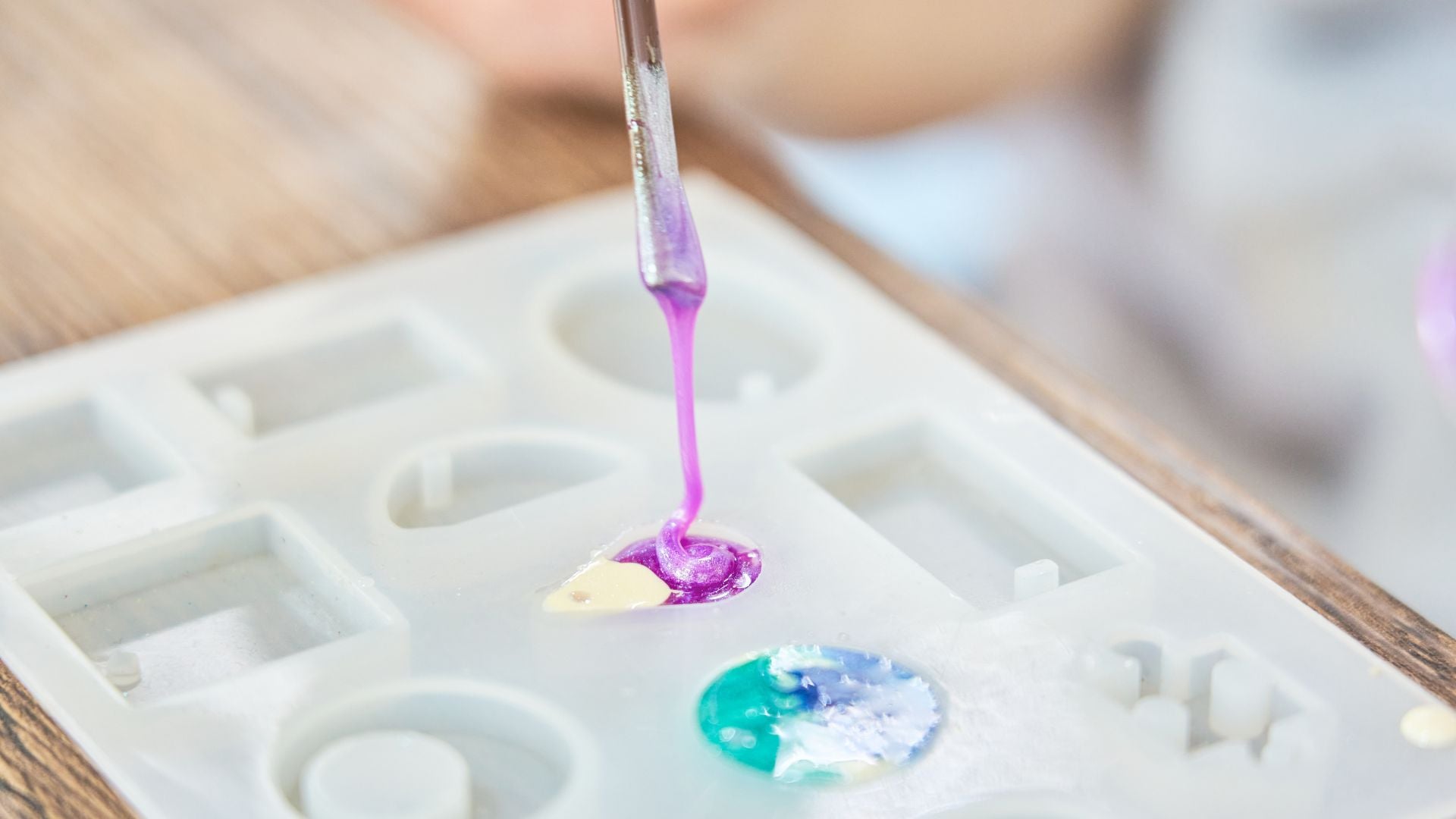
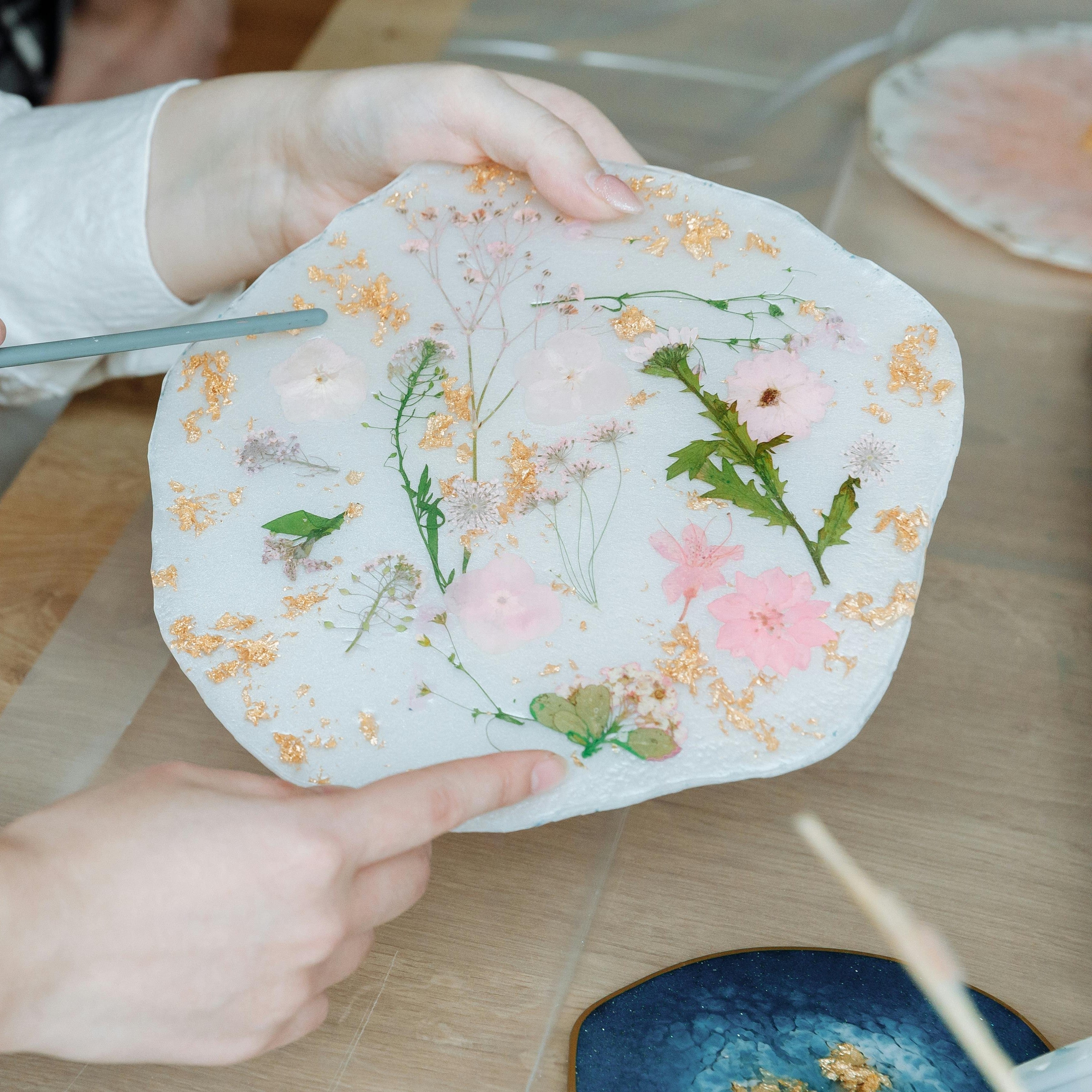
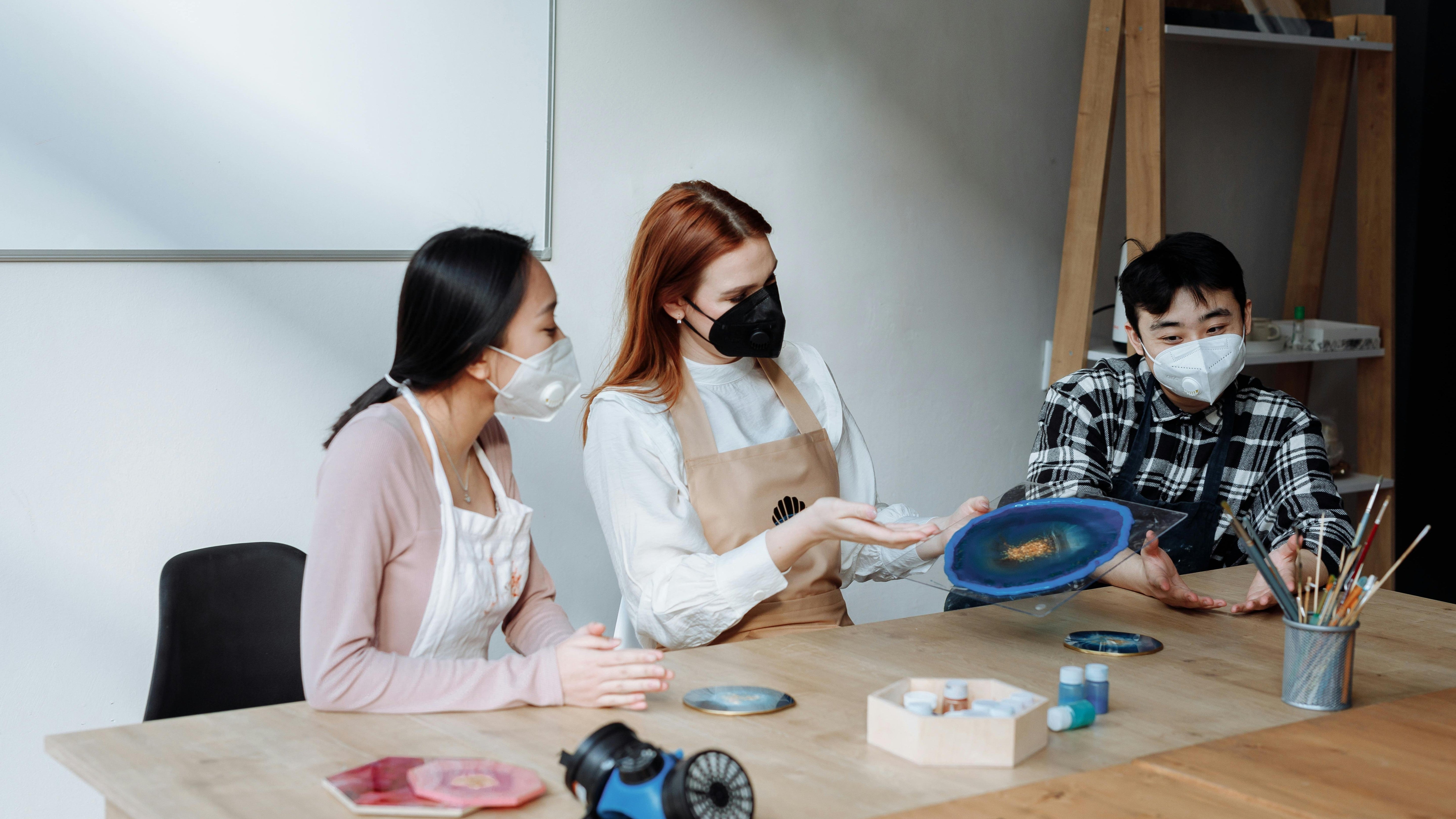


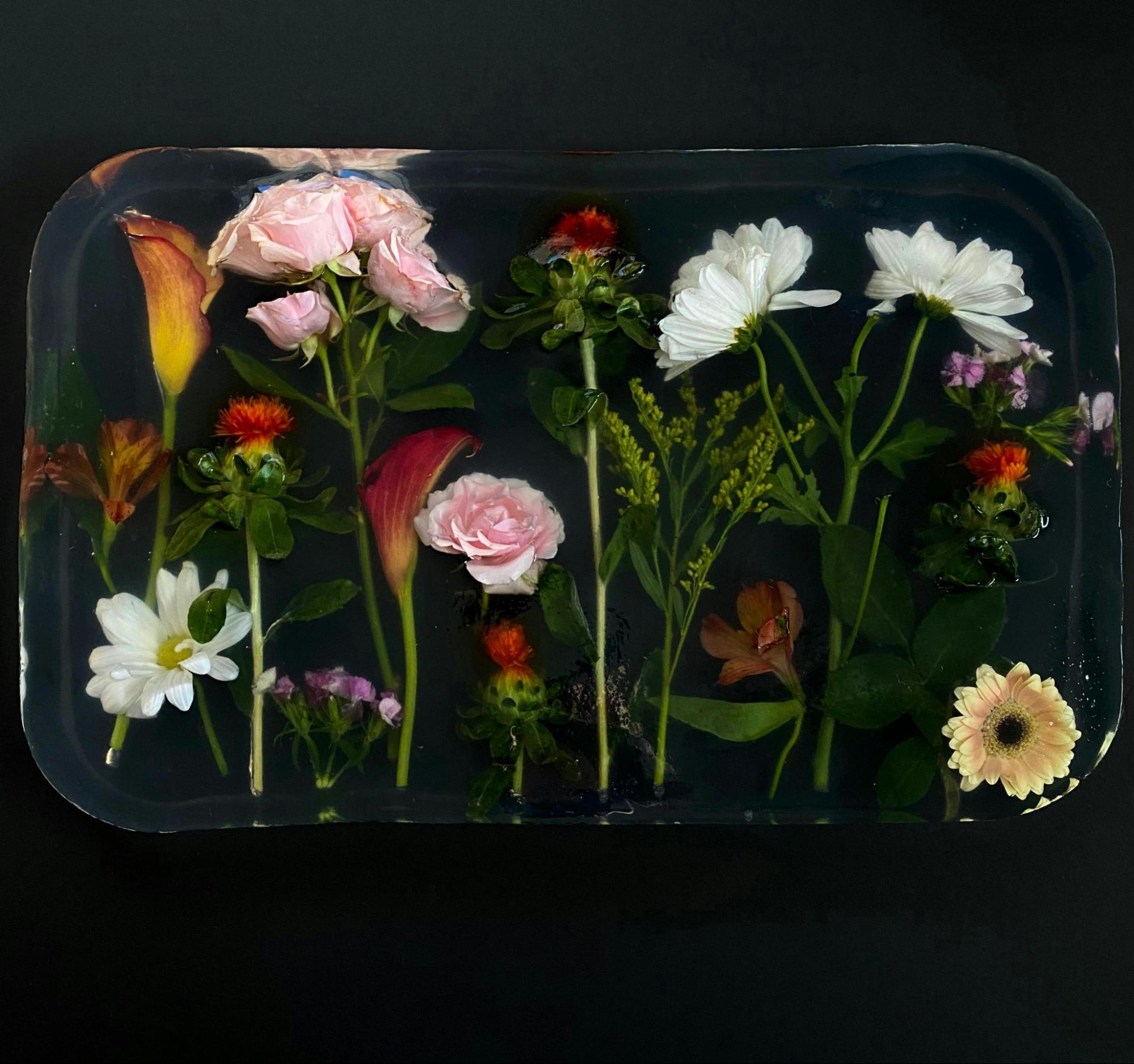
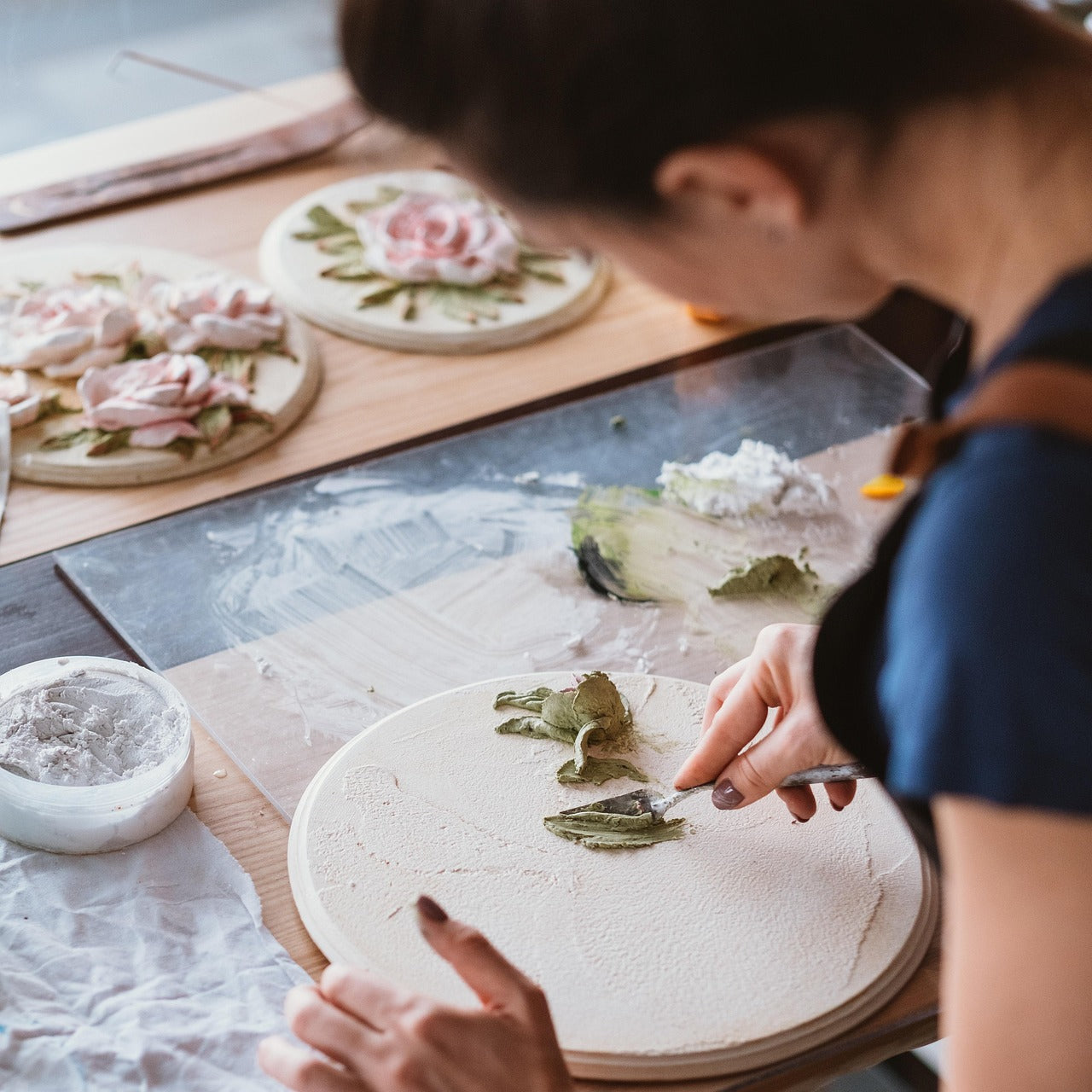
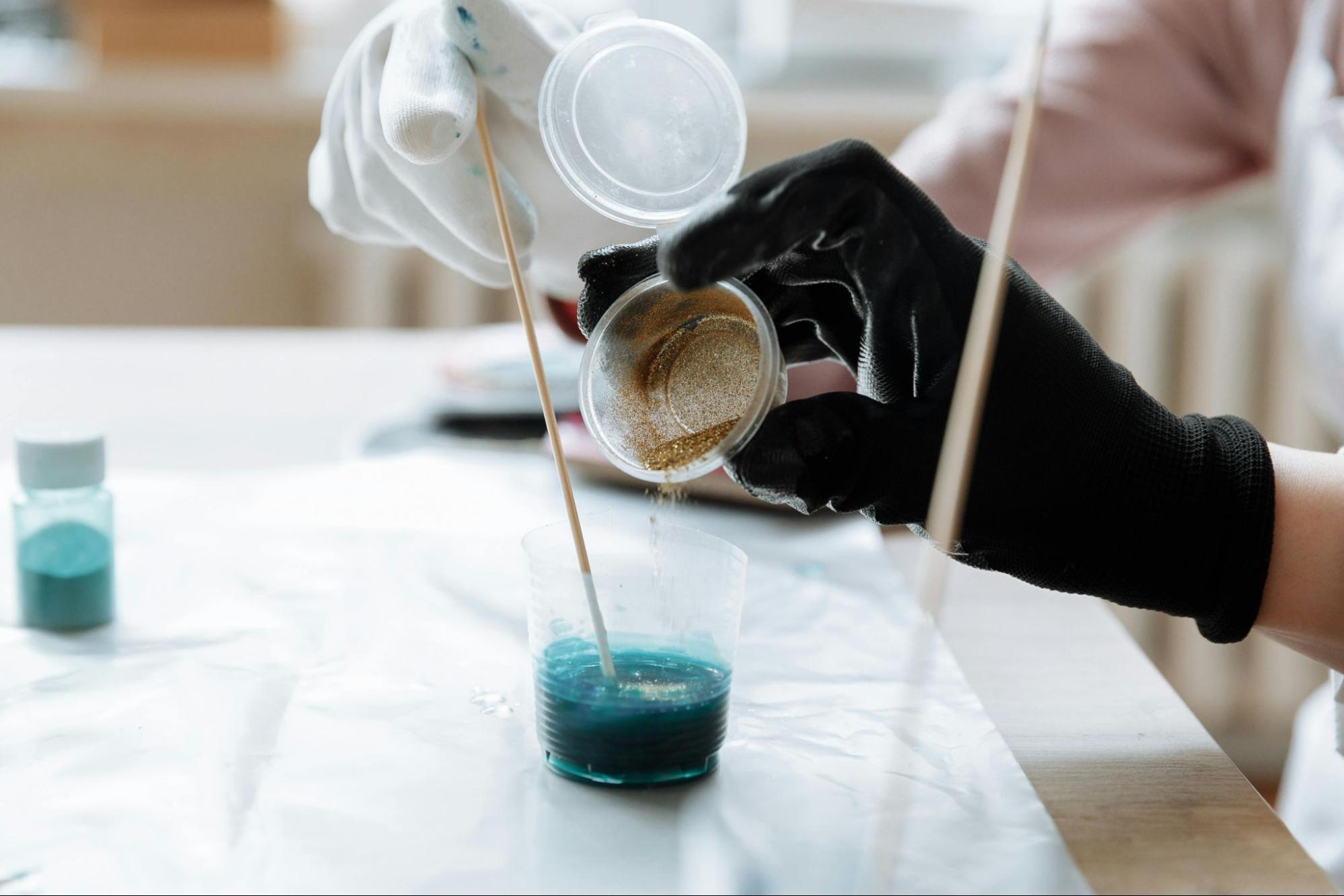
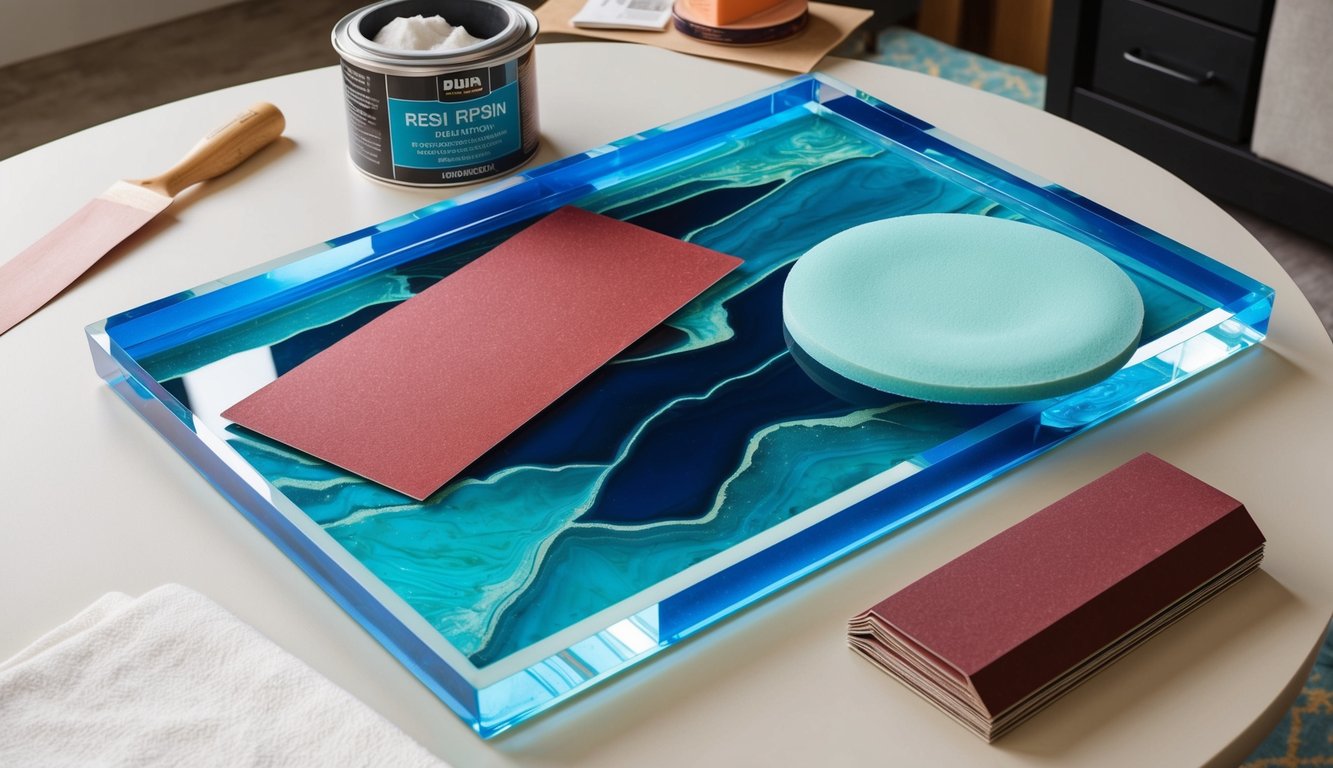
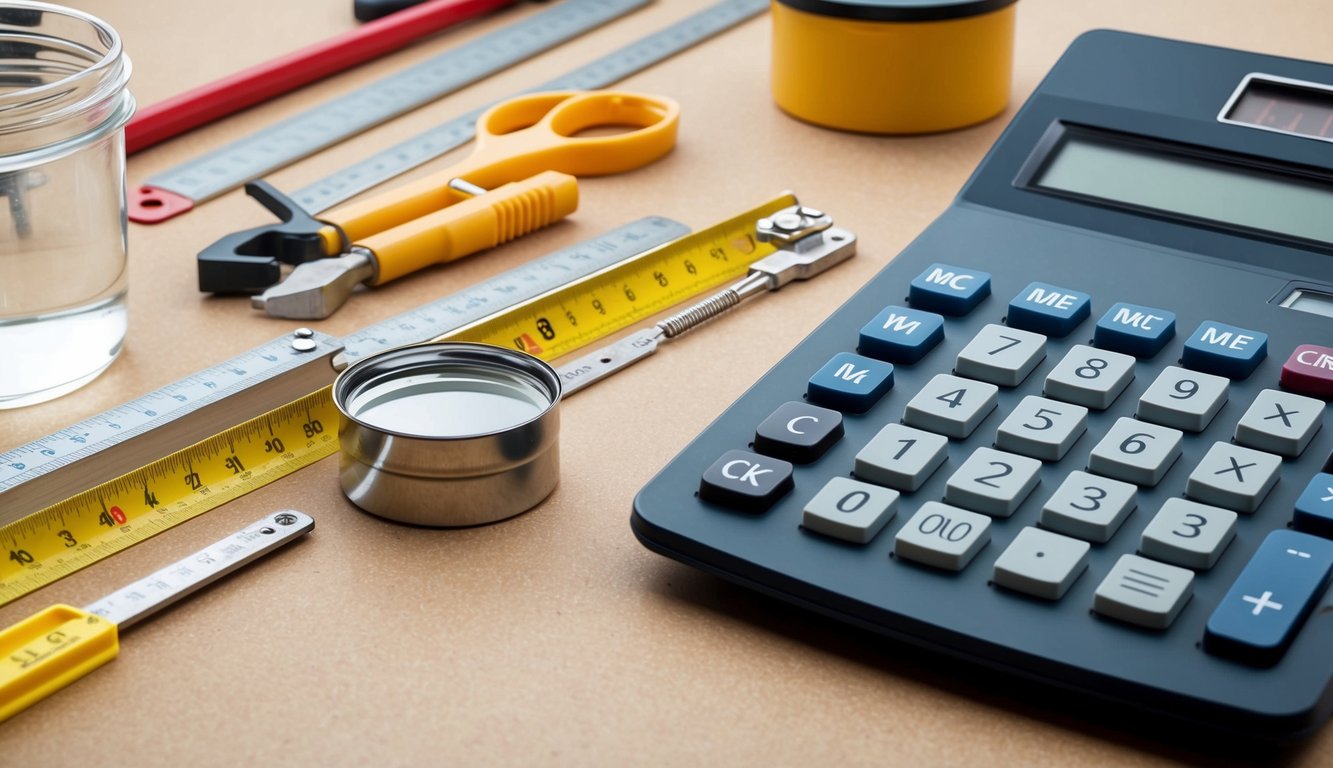


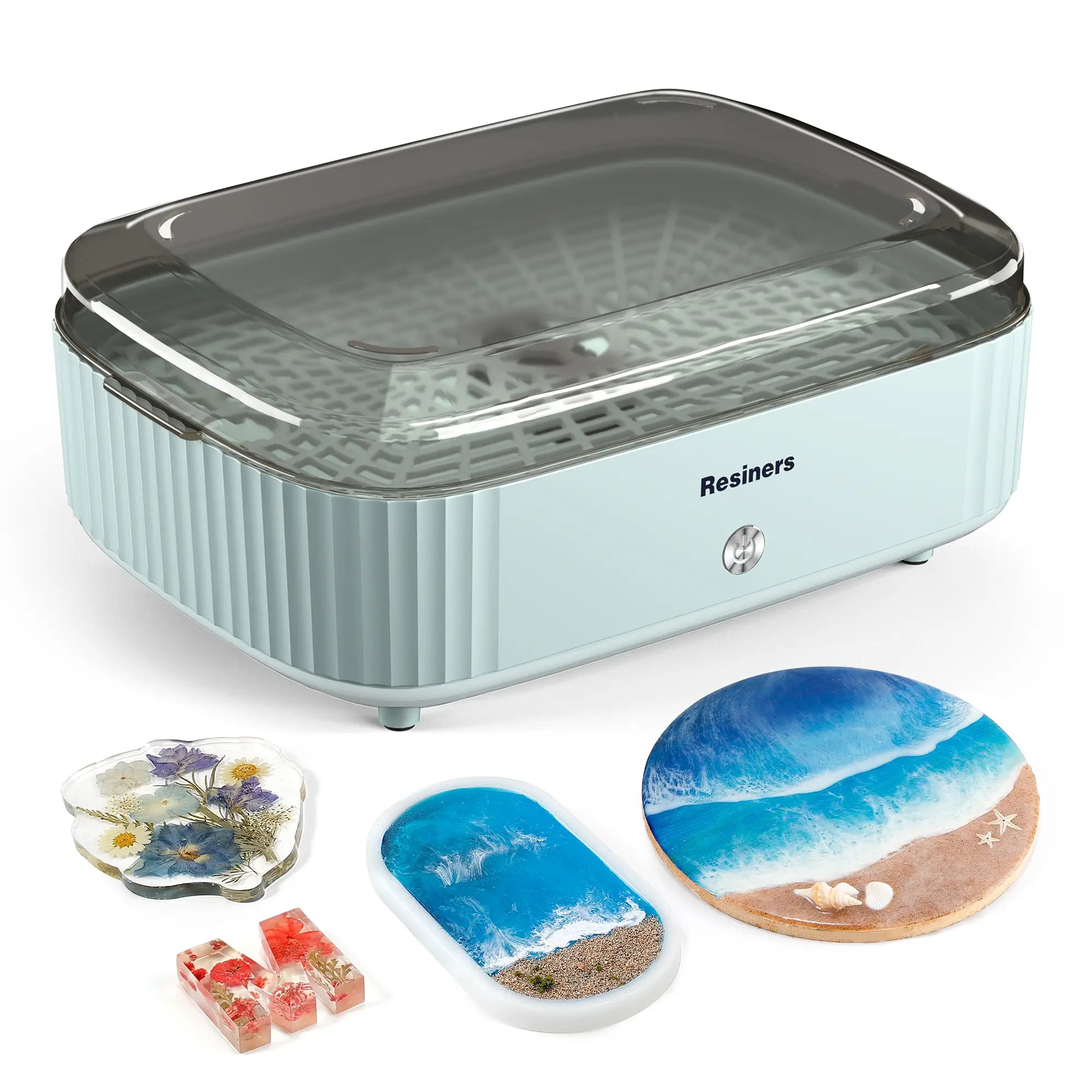

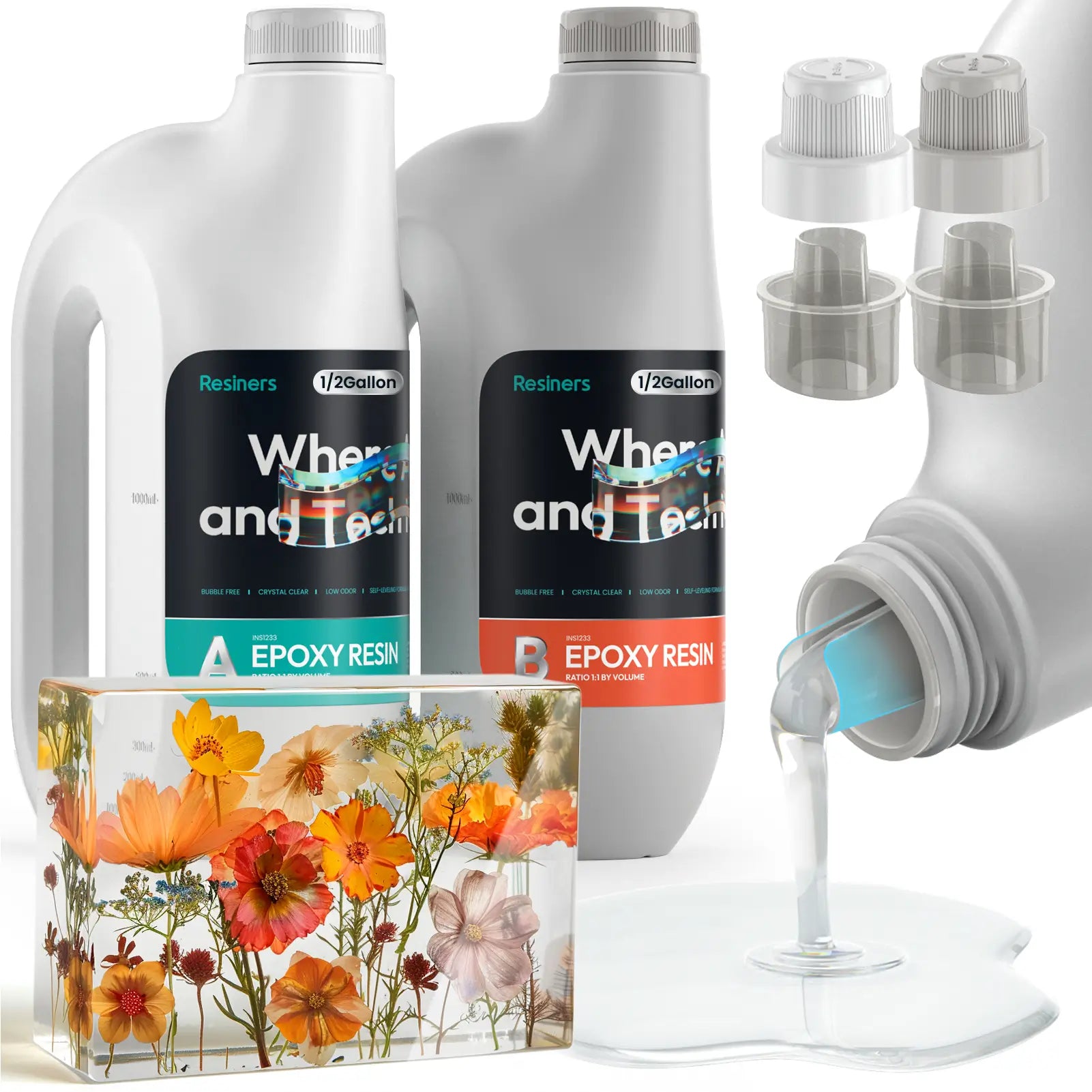
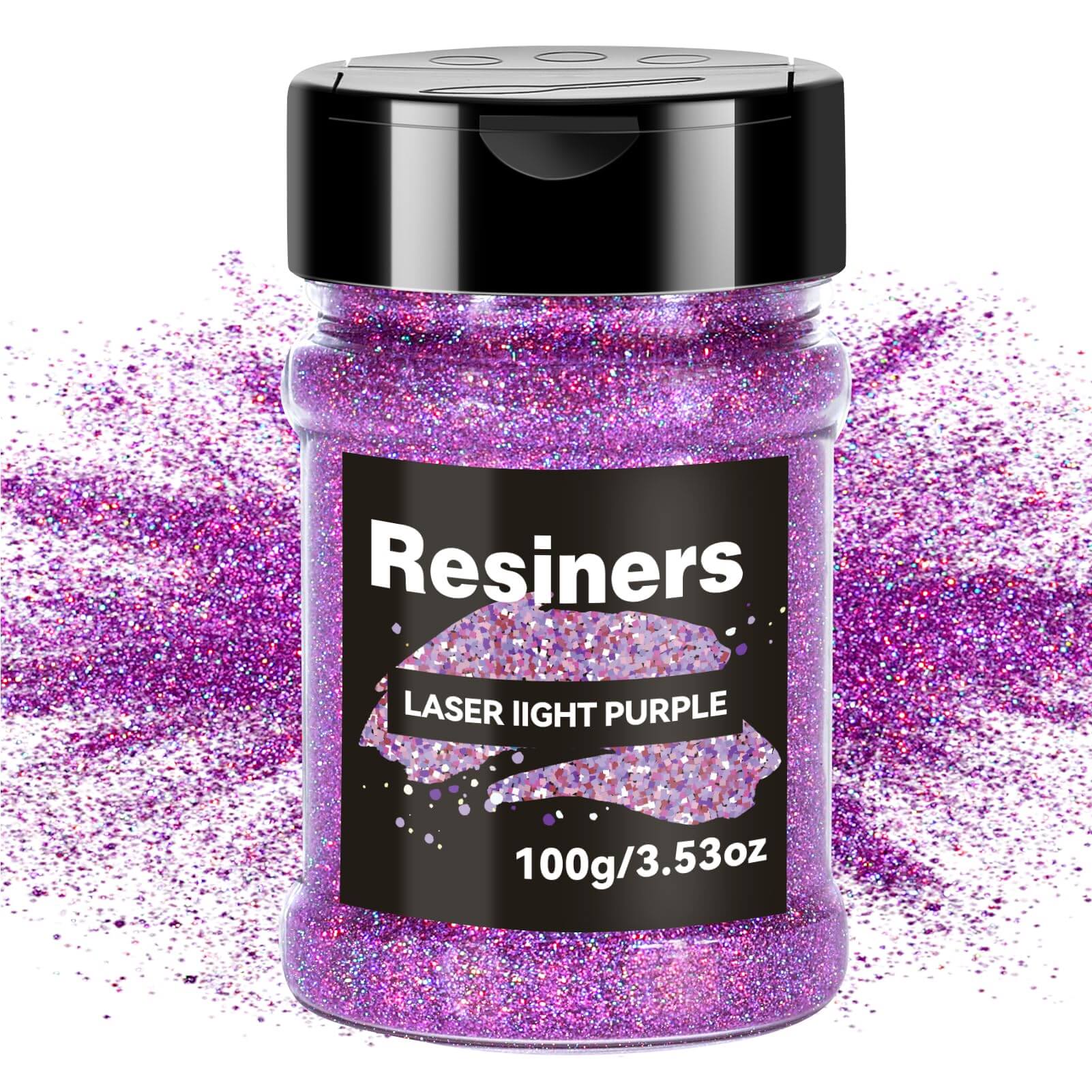
Leave a comment
This site is protected by hCaptcha and the hCaptcha Privacy Policy and Terms of Service apply.